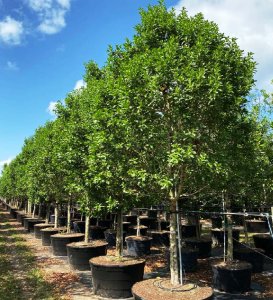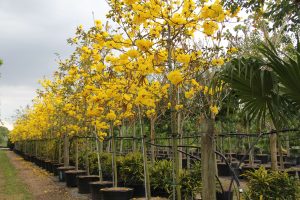Selecting all year trees is quite important to every landscape. Trees play different roles in the landscape over a calendar year, depending upon their growth character (evergreen or deciduous); and the change of seasons either summer or winter in the middle and higher latitudes and dry or rainy season in the subtropics and tropics. Native woody vegetation a desert may be evergreen, or deciduous in the cooler season.
Evergreen Year-Round Trees
In considering trees in terms of their qualities throughout the year. There is sometimes a misunderstanding about the distinction between evergreen trees and deciduous species. What are year long trees? All types of trees undergo periodic leaf replacement; evergreens drop old and produce new leaves throughout the year. As a result these are trees that grow all year round and are never leafless, although they may experience a growth flush of new leaves linked to temperature or precipitation. The foregoing applies to broadleaf and coniferous trees.
Trees That Last All Year – Deciduous Trees
Deciduous trees lose all of their leaves over a short period and stand leafless for a time before the replacement leaves begin to appear. Certain tropical tree species are deciduous, dropping all their leaves. Most often in the cooler or dryer season of the year, and producing flowers on bare branches. Complete their flowering and producing a new generation of leaves.

Year Long Trees – Conocarpus Erectus (Green Buttonwood)
For example, the Tabebuia trees of Tropical America; they represent some of the most spectacular spring flowering trees known. TreeWorld has in stock 8 different species, including the popular Tabebuia guayacan. The selection of trees for yearlong beauty comes down to personal preference for either predominantly foliage or flowering trees. In South Florida, the native Green Buttonwood (Conocarpus erectus) is a fine foliage tree; as are any of the palms, such as the Cabada Palm (Dypsis cabadae). Flowering trees are particularly popular; in addition to the Tabebuias, the Royal Ponciana (Delonix regia) is an outstanding flowering species.

Year Long Trees – Tabebuia Chrysotricha
Trees That Grow All Year Round in the Tropics and Subtropics
Tree plantings in the subtropics and tropics are often done with year-round trees to create shade on a year-around basis; evergreen broadleaf being most effective for this purpose. Whereas, in the middle latitudes, shade trees are preferably broadleaf deciduous types which provide shade during the hot summer months but allow light penetration in the winter season when days are shorter and the sun is low in the sky. In the middle latitudes, deciduous trees are often greatly appreciated for their summer foliage as well as for their stark but lovely silhouette against the winter sky when the tree is bare of leaves.
Only when a tree is completely without leaves can you see the intricate branching patterns. Leaf, fruit and flower characteristics are the most common means to precisely identify a tree. But identification is also possible when the tree is leafless by examining the features of the bark, general branching pattern and the form of the buds, leaf scars and nodes on the twigs.
How to Select Trees That Grow All Year Round?
It is difficult to generalize about which year long trees are best for year-long interest because local conditions and personal preferences are so variable. Attractive and interesting foliage is certainly a key concern, which can be found on trees which are conspicuous or subdued in their flowering and fruiting. Browsing through the TreeWorld inventory, reading the plant descriptions and examining the photographs, provides a menu of more than 200 trees and shrubs from which to choose.
—
Be sure to check out also our article on native tree meaning!



